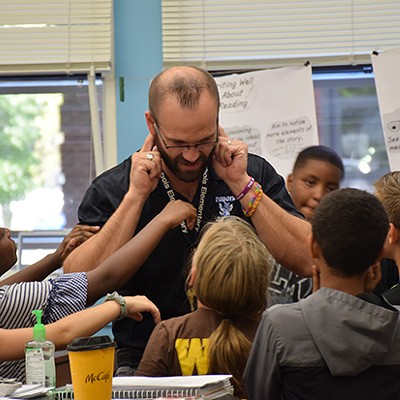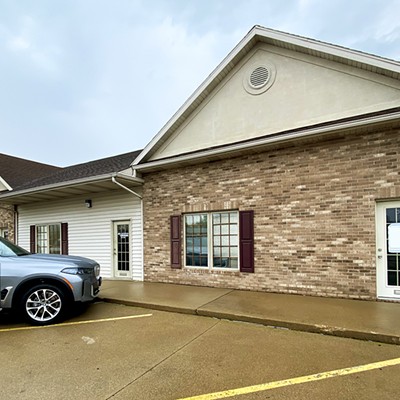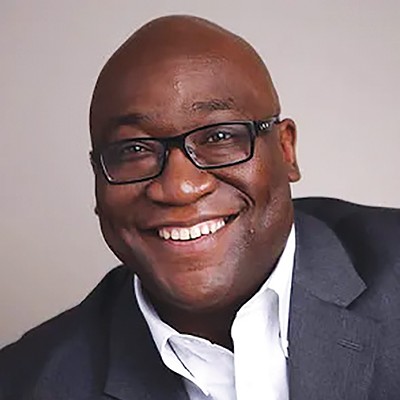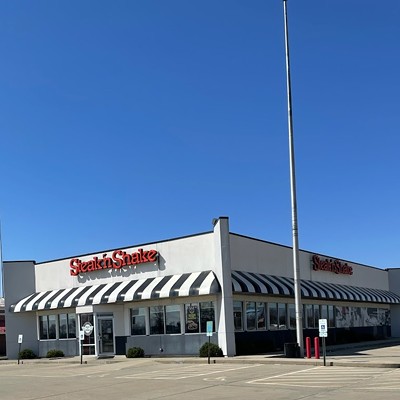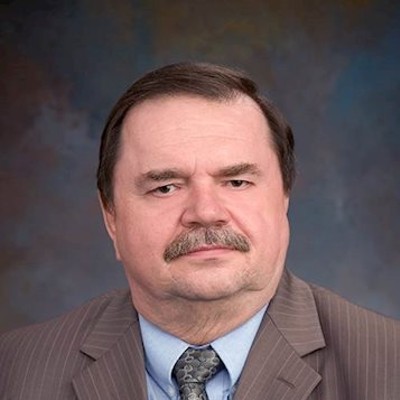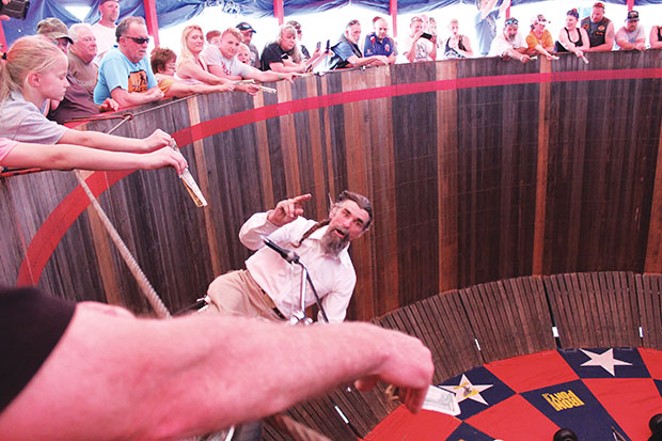
If you ride fast and crash, you are a bad rider. If you go slow and crash, you are a bad rider. And if you are a bad rider, you should not ride motorcycles.– Hunter S. Thompson
Each spring, like swallows to Capistrano, motorcyclists flock to Martinsville, 120 miles southeast of Springfield and dead in the middle of nowhere.
On Harleys and Hondas and BMWs they roar, or zip near-silent like the world’s fastest sewing machines, to a place that can’t be found via GPS for an event that isn’t advertised. Only the certifiable would brave rain and hail, even snow and ice, to gather in early spring for…hamburgers.
The annual Moonshine Lunch Run began in 2004 when Terry Hammond, a farmer, put out the word on a motorcycle chat board: Come join me at the Moonshine store down the road from my house and I’ll buy lunch. The first year, a half-dozen bikers showed up. This year, the store served 3,362 burgers to bikers who came from as far away as Maine and New Mexico.
Early spring in Illinois, and plenty of other places, can be punishing, and lunch-run veterans are filled with tales of miles traveled in subfreezing temperatures and thunderstorms, enabled only by electrically heated suits and sheer determination. Hammond chose the second Saturday in April because it wouldn’t interfere with planting or transcontinental summertime jaunts aboard his Honda to locales more exotic than Illinois.
It is one thing to ride from, say, Minnesota and another thing entirely to leave the warm confines of Florida to enjoy a burger, even a good one, on a picnic table (there is precious little indoor seating) served up by a tiny store with no liquor license or public bathrooms. And yet, the Moonshine Lunch Run has become a cherished tradition in the motorcycling world, an event that marks the beginning of the riding season for the diehard. Sturgis may have Steppenwolf and tattoo artists and scantily clad women and all the beer you can drink, but Moonshine has soul, the kind that comes from a refusal to charge registration fees or sell stuff for profit, save for the burgers, which go for their everyday price of $4.25 (and they take checks, but not credit cards).
Hammond, the lunch run founder, was aboard his tractor, not his bike, when he died of natural causes in 2010, but the event is bigger than ever. Scott Williams, a writer from Massachusetts who has made seven lunch runs, began the pilgrimage at the urging of a friend. “I’ve ridden through rain and a little snow and some thunderstorms I’d rather not think about,” he says. The burgers aren’t the reason. It is, rather, a blend of friendships and tradition and the inherent joy of motorcycling that draws Williams.
“It’s because I enjoy the people who meet there and carry on Terry Hammond’s Moonshine tradition,” Williams says. “I love the thrill of speed and motion. I find other people who like that, too. We tend to be kindred spirits. We can have different political views, different religious views – there’s all kinds of people that I’m good friends with who ride motorcycles and we don’t have a lot else in common. Yet, we manage to be great friends.”
For Becky Jackson, who runs two Springfield bars that cater to bikers, motorcycles have been a way of life since she was growing up with a father and uncle who wore matching vests, shorthand for being in a club. She owns two bikes, a Triumph and a Harley-Davidson, but can no longer ride owing to a brain tumor that limits her mobility on one side. Still, she enjoys riding on the back. “If you close your eyes, it feels like you’re flying,” she says.
Bikers, Jackson says, are straightforward, and that is why she likes them.
“These are the people I trust,” Jackson says. “I’ve never met more loyal people in my life. You always know where you stand. You’re always going to get honesty.”
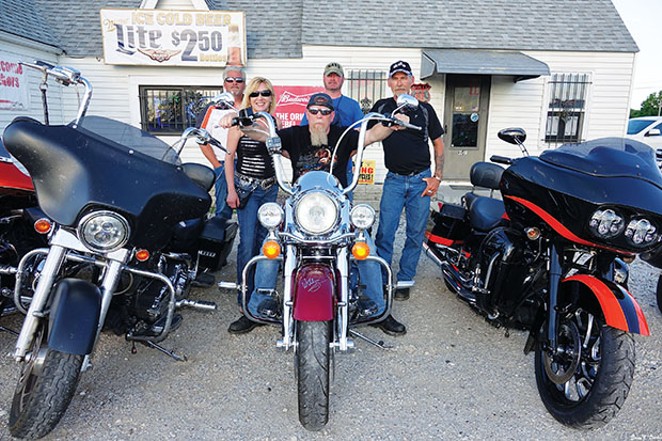
“On a bike, no one ever asks, ‘Are we there yet?’”– Stacy Westfall
After peaking in 2013, when there were 7,713 motorcycles registered in Sangamon County, numbers last year were down to 6,214, which works out to one motorcycle for every 32 county residents. Motorcycles are more common here than in the state as whole, which boasts one bike for every 42 residents, according to the Illinois Secretary of State, and popularity has grown significantly over the past 20 years. In 1996, there were 30 percent fewer motorcycles registered in Sangamon County than there are today.
It is a risky way to get around. More than 25 motorcyclists in the United States died for every 100 million miles traveled in 2015, a death rate 25 times higher than the rate for occupants of passenger cars, according to the National Highway Transportation Safety Administration. Illinois, where 136 riders were killed, ranked 10th in the nation for motorcycle fatalities in 2015, the most recent year for which nationwide statistics are available. We are one of just three states that don’t require helmets for any riders (19 states mandate helmets for all riders and passengers while 28 require helmets for some motorcyclists, usually those under a certain age).
Some folks ride 12,000 miles every year, others barely make 1,000. Some riders strap sleeping bags to the back seat when heading out on 2,000-mile adventures, others load their bikes onto flatbed trailers and sleep in hotels when attending motorcycle rallies across state lines. Despite differences, there is a motorcycle culture, according to Tim Griffin, a former Springfield alderman who now works as coordinator for the city council, and he thinks that danger has something to do with it.
“I think, maybe, there’s some camaraderie amongst people who are doing something that’s an inherently dangerous thing to do – maybe that brings people together,” says Griffin, a longtime rider who is a founding member of Steel Justice, a motorcycle club formed in 1989. “You’re riding down the road at 80 to 90 mph…”
He pauses, then starts again.
“When you’re riding down the road at exactly the posted speed limit on a piece of metal, exposed to the elements, you have a different outlook and philosophy,” Griffin says.
Ah, speed. There is no denying it. Motorcyclists tend to have a taste for testing the limits of their machines. It is the rare biker who cannot tell you how fast his steed will go, and he didn’t find out by looking it up on Wikipedia. The typical Harley strains to reach 120 mph, which is fast, but only in a relative sense. Compare that to a Japanese or Italian sport bike, the type that requires the rider to assume the position of a dog fucking a football, and a Harley stands still. You can smile at 120 mph (if you have a windshield to keep the bugs out of your teeth), but the road at 150 mph turns serious, an exceedingly thin line of asphalt, with each puff of wind a seeming hurricane blast aimed at depositing you sideways into the ditch, if you’re lucky, or straight into a tree. If you’re on a Ducati 1199 Panigale R, which tops out at a reported 202 mph, you’re just getting started. Weighing less than 400 pounds and blasting 205 horsepower, a Panigale R, the world’s fastest production street bike, sells for $35,000; if you’re willing to settle for 186 mph, you can buy a Suzuki Hayabusa for less than half that.
Such so-called sport bikes are to Harleys as chihauahaus are to Great Danes, but just as every dog is, ultimately, a dog, a motorcycle is, after all, a motorcycle. And so what does a Harley rider like Griffin do when he spots someone on a Ducati?
“You know what you do?” Griffin responds. “You wave to them.”
And the Ducati rider waves back.
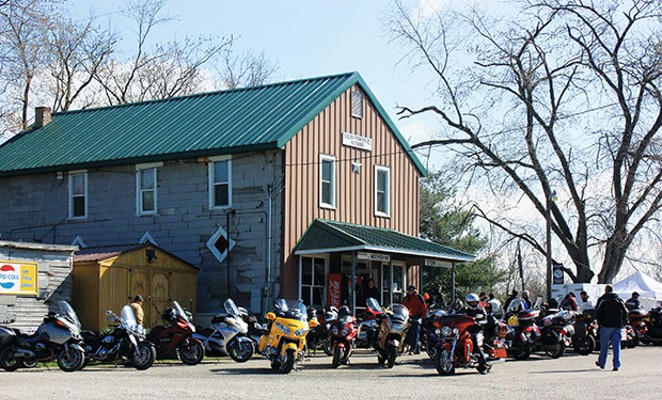
“Other people can talk about how to expand the destiny of mankind. I just want to talk about how to fix a motorcycle. I think that what I have to say has more lasting value.”– Robert M. Pirsig
Hang around any place where motorcyclists gather and a few truisms quickly become apparent.
It is, overwhelmingly, a male avocation. In 2014 just 14 percent of motorcycle owners were women, according to the Motorcycling Industry Council, a trade group that notes that the percentage has climbed over the years – in 1990, 6 percent of bike owners were female. Motorcyclists also tend to be well off and old enough to know that they really should wear helmets and obey the speed limit. The median household income for a motorcycle owner in 2014 was $62,200, the council says, and the average age was 47, a climb from 2000, when the average owner was 40, and 1990, when the average motorcycle owner was 32 years old. More than 70 percent have at least some college education, the council says, and Harley-Davidson, which manufactured more than 29 percent of the new bikes sold in the U.S. in 2015, dominates, accounting for more than twice as many sales as Honda, the runner-up.
By all rights, the Midwest should not be a motorcycle mecca. Roads tend to be straight, with cornfields the dominating scenery. Weather is prohibitive for half the year, or more. We are flyover country, really, for bikers in search of ideal weather and the perfect road that winds and twists through snowcapped mountain ranges or emerald-green forests. There is no Tail of the Dragon, an infamous Appalachian road that boasts 318 curves in 11 miles and draws bikers from around the world, or anything close to it. And yet, Iowa and Wisconsin tie for third in per-capita motorcycle ownership. Illinois is 31st, which may not sound so hot, but we’re still significantly ahead of California, Utah and other states with better roads or weather or both than the Land of Lincoln.
Raymond Yokem, president of the Capital Cruisers motorcycle club, theorizes that the popularity of motorcycling in central Illinois lies in the staidness of our streets. While roads may not hasten the heartbeat, they are also relatively devoid of traffic, he notes, particularly out in the country, and so riding a motorcycle is possible for most anyone with a hankering and sense of adventure.
“If you can’t ride here, you maybe don’t want to ride,” says Yokem. “If you can’t ride in Springfield, you really don’t need to be going on the dragon’s tail.”
Yokem, 60, started riding in 1973. Like so many others, he started out on Japanese bikes before moving on to Harley-Davidsons. His days of testing fate on a Kawasaki KZ1000, the fastest bike you could buy back in the late 1970s, are over, he says, but the passion remains.
It seems as much a love for fellowship as for machinery. The Cruisers clubhouse on South 19th Street is as much a social club as a biker hangout. On a recent Saturday, there were more cars than motorcycles parked at a place where ice-cold beverages and Butch’s pizza can be enjoyed along with baseball on flat screens or domino games. Heavy D, Mary J. Blige and other old-school hip-hop and R&B artists pulse in the background. An expanse of grass across the street, dubbed Capital Cruisers Park, accommodates overflow parking for the club’s fish fries and pig roasts that draw bikers from many miles around.
Different clubs have different rules. Steel Justice, for example, requires members to ride Harley-Davidsons or American-made bikes that resemble Harleys. While primarily a black club, all races and both sexes are welcome in the Cruisers, says Yokem, who counts 23 members, all but two African-American men. While most ride Harleys, you can own a Honda or a Suzuki or a Triumph or anything else with two wheels and a motor that will put you at freeway speed and you’re eligible, Yokem says, so long as you have good character and you ride whatever it is that you own as often as possible. Have a job, and if you work as a salesman, be prepared to say what it is that you’re selling.
Founded in 1979, the club is one of the oldest in Springfield, and Yokem says that’s a function of casting a wide net. The brand of motorcycle and age of rider isn’t as important as the person. “The reason we have longevity is we get the best people,” Yokem says. “We always say, family comes first. We don’t override that.”
It’s almost quaint, really, a flashback to a time that isn’t supposed to exist anymore, with motorcycles replacing quilting or bowling or barn raising as the glue that binds folks together. The Cruisers hold annual dances, the most recent one having been at the Crowne Plaza hotel in May. Last weekend, the KnightRiders of Decatur held a dance at the Decatur Conference Center and Hotel that drew hundreds of bikers from throughout central Illinois, with plenty of food and music and laughter, a big wedding reception or prom, take your pick, without the need for fancy clothes or expensive gifts.
And then there is Hogrock, an adults-only biker party scheduled for this coming weekend at a private campground at Cave-in-Rock in extreme southeastern Illinois. All you need is $50, ID to prove that you’re at least 18 and the wherewithal to make it 14 miles to the closest store should you run short of provisions. After that, most anything goes so long as you don’t hurt anyone, and there are plenty of things to do and see, including the topless hula contest, ax-tossing competitions, a clothing-optional swimming hole and a plethora of bands aimed at people who like loud three-chord rock. “Remember, your picture may be taken by fellow rally goers, so if you don’t want anyone to see it later, don’t show it now,” organizers warn on the event’s website.
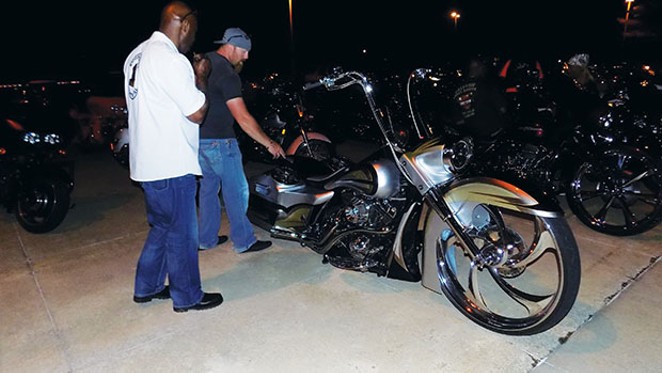
“Anybody can jump a motorcycle. The trouble begins when you try to land it.”– Evel Knievel
After a booking in 2016, the American Motor Drome Co. is skipping Hogrock this year. But the death-defying show that features riders zipping around a wooden track set up perpendicular to the ground, with only centrifugal force between them and disaster, was a hit at Hall’s Harley-Davidson last month, which brought the act to Springfield on Memorial Day weekend to help lure bikers from the Springfield Mile.
Riding a motorcycle on a track with the bike parallel to the ground, a dozen or so feet in the air, is a quintessentially American endeavor that got its start more than a century ago. Dubbed Walls of Death, the portable wooden tracks peaked during the Great Depression, when there were an estimated 100 setting up at fairs and carnivals throughout the nation for crowds that came to see riders cheat death. There are now fewer than five such tracks, and motorcycling events have replaced carnivals as the bread and butter.
“I’m never going to be a rich guy,” says Charlie Ransom, who hails from California and has been riding the wall since 2002, plucking bills in denominations ranging from $1 to $20 from the outstretched hands of spectators. “If this was a lucrative business, there’d be a lot of them out there.”
Ransom got started when he was stranded in California years ago with a dead battery and no money. The wall happened to be in town and Ransom, who’s been riding motorcycles since he was 14, thought it looked like a good idea. He isn’t alone. “You’d be surprised,” says Jay Lightnin’, who built and owns the wall and was inducted into the Sturgis Hall of Fame three years ago. “Everybody wants to do it, everybody wants to try it.”
Not everybody, of course, gets the chance. The world speed record on a wall of death was set last year by a British rider who was clocked at faster than 78 mph, but that wall was considerably larger than the American Motor Drome version, which is 30 feet in diameter and 14 feet high. Riders pull between two and three gs and travel about 30 mph on these smaller walls, but it looks considerably faster. Vintage Indian motorcycles from the 1920s, legendary for their balance and low centers of gravity, are the preferred bike.
Riders wear no helmets on the Wall of Death. “Nobody wants to see the wall of bumps and bruises,” quips Reckless Reda, who looks intact enough that her moniker could be spelled with a “w.” Lightnin’ and Ransom are less cavalier. Crashes, Lightnin’ says, are inevitable, and he has plenty of titanium and stainless steel in his body to prove it. “It’s the wall of fuck-you-up,” intones Ransom, who has a tattoo of the wall on one arm and “America” tattooed across his knuckles.
You don’t have to ride the Wall of Death Ride to experience thrills and near misses. Ride long enough, and you’ll have your own stories to tell, no matter how careful you are. Bill Shures of Springfield came close some 30 years ago, when a dog came out from a farmhouse in Fancy Prairie. It was after dark, and Shures looked in his mirror for the dog behind him just as the road took a jog. He was in the ditch before he knew it, struggling to get back on the road, when a culvert loomed. Shures slid off the back and watched as his Honda 750 collided with the culvert. Both he and the bike were in pretty good shape, except the headlight was bent toward the sky. He made it home, rejoicing when he reached the streetlights of Sherman, only to find that the streetlights switched off as he neared them. He found his way watching his headlight beam reflect from overhead power lines alongside the road.
“I’ve been pretty lucky – I try to anticipate and expect what people do,” says Shures, who now rides a Harley and is a veteran of both the Moonshine Lunch Run and Hogrock. Power and speed are exhilarating, he says, and it’s true that you never feel more alive than when you’re close to death. He can tell a riding companion by the sound of the motor, and, sadly, he says that not all are here anymore.
“We’ve lost a few friends, but we’ve gained a lot more,” Shures says. “You’re going to die no matter what you do. Enjoy life. Make the most of it.”
Contact Bruce Rushton at [email protected].




